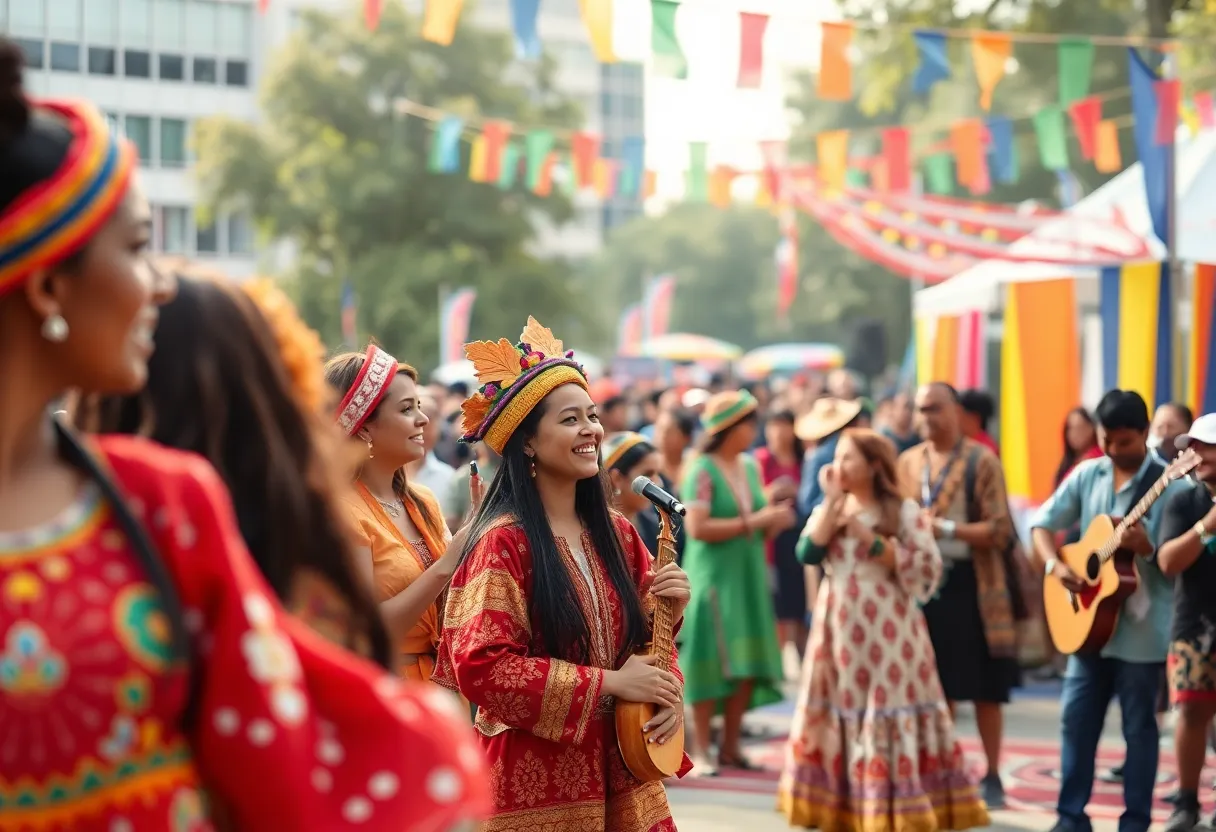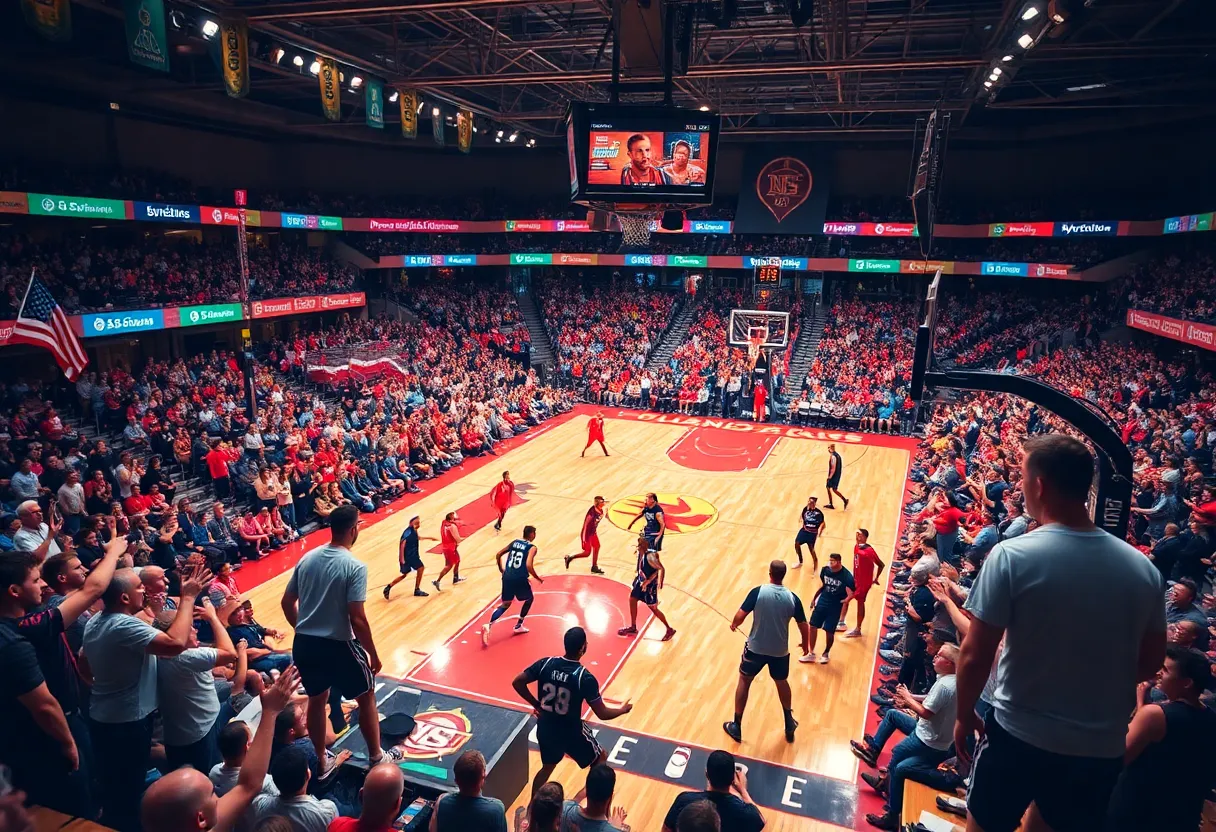Omaha, Nebraska, October 15, 2025
The University of Nebraska Omaha recently held its annual Cultural Heritage Festival, celebrating global diversity through music, dance, and cuisine from over 20 cultures. The event attracted hundreds of students and local residents, reinforcing community engagement and campus inclusivity. With free admission, attendees enjoyed a range of activities including performances, interactive cultural displays, and a keynote address emphasizing the importance of unity in diversity. The festival’s success reflects the university’s commitment to cultural exchange and fostering a sense of belonging within the community.
Omaha, Nebraska: University Hosts Annual Cultural Heritage Festival
Omaha, Nebraska, recently hosted the annual Cultural Heritage Festival at the University of Nebraska Omaha. The event, held in the Barbara Weitz Community Engagement Center, showcased a vibrant array of activities designed to celebrate global diversity. Hundreds of students and local residents attended, making it a key gathering for community engagement in the area.
At the forefront of the festival were performances and exhibits featuring music, dance, and cuisine from over 20 global cultures. This included traditional displays that highlighted various cultural traditions, allowing attendees to experience a broad spectrum of international heritage. The festival’s organizers aimed to foster a sense of unity, especially in light of ongoing community dynamics.
A central highlight was the keynote address, which focused on the importance of unity in diversity. This message resonated with participants, emphasizing how such events can strengthen social bonds. The festival’s free admission policy played a significant role in its success, ensuring that it was accessible to all and helping to enhance overall campus inclusivity.
Building on its annual tradition, the Cultural Heritage Festival has become a staple event at the University of Nebraska Omaha. It attracted a diverse crowd, with estimates indicating participation from hundreds of individuals. The activities were carefully curated to represent a wide range of cultural elements, from lively dance routines to authentic culinary offerings.
The event’s structure included interactive sessions where attendees could engage with different cultural displays. For instance, visitors explored booths dedicated to specific cultures, each offering insights into their unique practices. Music performances featured instruments and styles from around the world, adding an energetic atmosphere to the proceedings.
Dance demonstrations were another key component, with groups performing traditional routines that told stories of cultural heritage. These elements not only entertained but also educated participants about global histories and customs. The cuisine aspect allowed attendees to sample dishes from various regions, further immersing them in the festival’s theme.
In terms of attendance, the free entry policy was instrumental in drawing a large and varied audience. This approach aligned with the university’s efforts to promote campus inclusivity, making cultural events more approachable for everyone. The festival’s timing coincided with efforts to address broader community issues, reinforcing its relevance in today’s context.
Overall, the festival served as a platform for cultural exchange, helping to bridge gaps between different groups. It underscored the value of such gatherings in building a more connected and understanding society. By focusing on shared experiences, the event highlighted how diversity can be a source of strength.
Looking at the broader impact, these types of events at universities like the University of Nebraska Omaha contribute to ongoing discussions about cultural awareness. They provide opportunities for learning and interaction that extend beyond the campus, influencing the local community positively. The festival’s success this year could encourage similar initiatives in the future, promoting continued engagement.
Participants reported a positive experience, with the event’s organization facilitating smooth flow between activities. From the opening ceremonies to the closing remarks, everything was designed to maximize participation. This level of planning ensured that the festival met its goals of celebration and education.
In summary, the Cultural Heritage Festival exemplified how cultural events can unite people. By featuring elements from over 20 global cultures and emphasizing unity, it addressed important themes in an engaging manner. The university’s commitment to accessibility through free admission further amplified its reach and impact.
To expand on the event’s details, it’s worth noting how each component contributed to the overall experience. Music selections varied from upbeat rhythms to melodic tunes, representing different continents. Dance performances included group routines that involved audience participation, making the event more interactive. Cuisine stations offered tastes from around the world, with options for various dietary preferences, enhancing the sensory appeal.
The keynote address provided a thoughtful perspective on current community matters, stressing the role of diversity in fostering harmony. This aspect tied into the festival’s theme, encouraging attendees to reflect on their own cultural backgrounds. Such elements combined to make the event not only entertaining but also meaningful.
Finally, the festival’s location in the Barbara Weitz Community Engagement Center was ideal, offering ample space for activities and easy access for all. This setup allowed for a seamless experience, from parking to exiting, which added to the event’s positive reception.
FAQ Section
- Question 1: What was the main event held in Omaha, Nebraska?
- Question 2: What features were included in the festival?
- Question 3: How many people attended the festival?
- Question 4: What did the keynote speaker discuss?
- Question 5: How was the festival made accessible?
Answer: The University of Nebraska Omaha celebrated its annual Cultural Heritage Festival in the Barbara Weitz Community Engagement Center.
Answer: The event featured music, dance, and cuisine from over 20 global cultures.
Answer: The event drew hundreds of students and locals.
Answer: The keynote speaker emphasized unity in diversity amid rising community tensions.
Answer: Free admission made it accessible, boosting campus inclusivity.
Key Features Chart
| Feature | Description |
|---|---|
| Music | Performances from over 20 global cultures, showcasing diverse styles and instruments. |
| Dance | Demonstrations of traditional routines that highlighted cultural stories and movements. |
| Cuisine | Samples of dishes from various global regions, offering authentic tastes. |
| Attendance | Drew hundreds of students and locals, promoting community participation. |
| Keynote Theme | Emphasized unity in diversity amid rising community tensions. |
| Accessibility | Free admission to boost campus inclusivity and ensure wide access. |
Deeper Dive: News & Info About This Topic
HERE Resources
Omaha Nonprofits Organize ‘Survivor’-Themed Afterschool Event
Omaha’s AfroCon Returns for Seventh Year of Cultural Celebration
Omaha Weekend Events Offer Fun for Everyone





